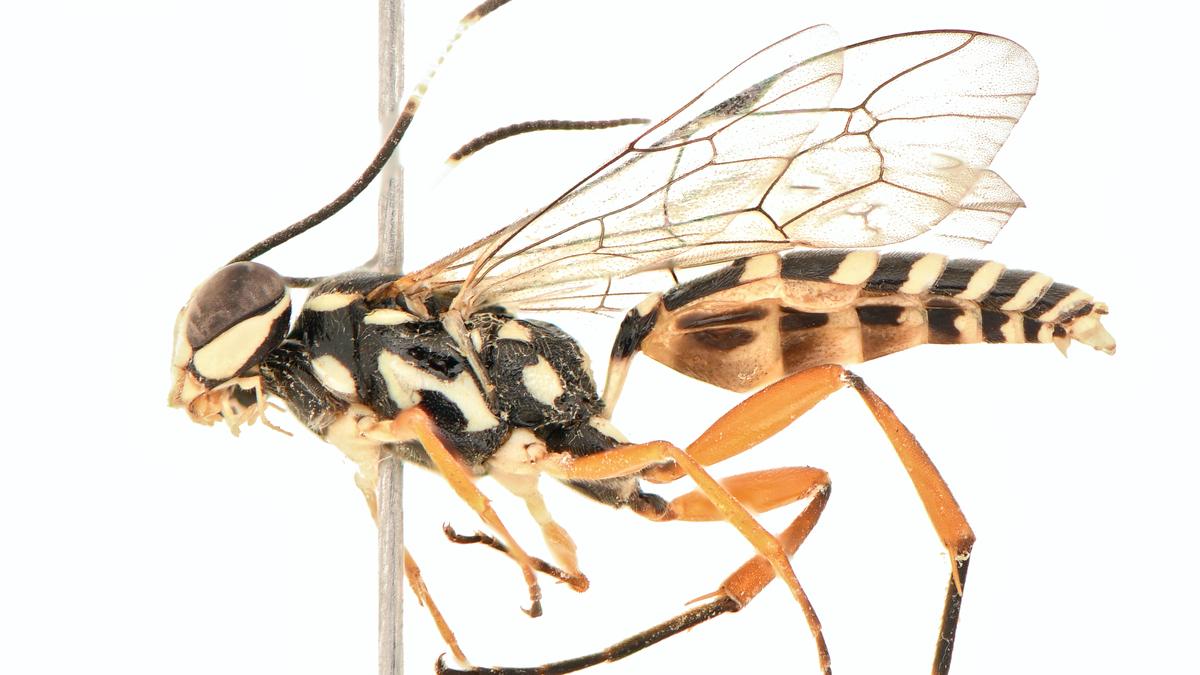Type specimen of the new wasp species, Losgna occidentalis collected from Chandigarh.
At a time when habitat loss and climate change threaten countless species, the discovery of a new species of parasitic wasp – named ‘Losgna Occidentalis’ from Chandigarh has drawn attention to the unexplored richness of India’s biodiversity.
A recent study published in Zootaxa, a peer-reviewed scientific journal for animal taxonomists, titled – ‘Rediscovery and description of a new species of Losgna (Cameron 1903): reviving a forgotten ichneumonid genus (Darwin wasps) in India’ – points out the rediscovery of the Losgna genus in India, after close to six decades, and describes “a new species collected from an urban dry scrub forest in Chandigarh.”
“The solitary Losgna (wasp) specimen was collected from a windowsill in Chandigarh, during winter 2023–24. This locality marks the first time any new insect species has been formally described from Chandigarh. The specimen belongs to a parasitic wasp (family Ichneumonidae), a group known for laying eggs inside or on other arthropod hosts. Prior to this discovery, Losgna had not been recorded in India since Heinrich’s 1965 monograph. No records, specimens or published literature on Losgna existed in any Indian institution after 1965. It appeared that the genus had vanished entirely from its once‐documented range in northeast India until we found this new specimen in Chandigarh,” Karmannye Chaudhary, who led the study, a researcher in bird ecology and insect taxonomy at the Queen Mary University of London, told The Hindu.
“We named the new species ‘Losgna occidentalis’ because it represents the westernmost known occurrence of the genus: prior records came exclusively from tropical forests of eastern India and adjacent regions of Southeast Asia. ‘Occidentalis’ signifies this western extension,” he said.
Pointing out that the only existing specimens of any Losgna species are those preserved at the Natural History Museum, London, The Hope Collection, Oxford University and the Zoologische Staatssammlung München (ZSM), Munich – all dating from the British era, Mr. Chaudhary said, “No other collections -Indian or international – were found to hold Losgna material between 1965 and our study.”
“As a researcher of Hymenoptera, I’m thrilled by the discovery of Losgna occidentalis. It highlights the importance of solid taxonomic work and shows how young people, and even citizens, can find new species in their own backyards. This project also exemplifies valuable international collaboration between institutions like the NHM and Oxford, which is vital given how underfunded and poorly coordinated taxonomy has become. Hymenoptera are crucial as pollinators and biological control agents, so identifying and describing new species is essential for understanding and conserving our ecosystems. I hope this discovery inspires others to explore local habitats, collect specimens responsibly, and collaborate across borders to document India’s hidden biodiversity,” said Ritesh Kumar Gautam, scientist at Wildlife Institute of India, Dehradun, Uttarakhand.
Published – June 07, 2025 02:53 am IST

